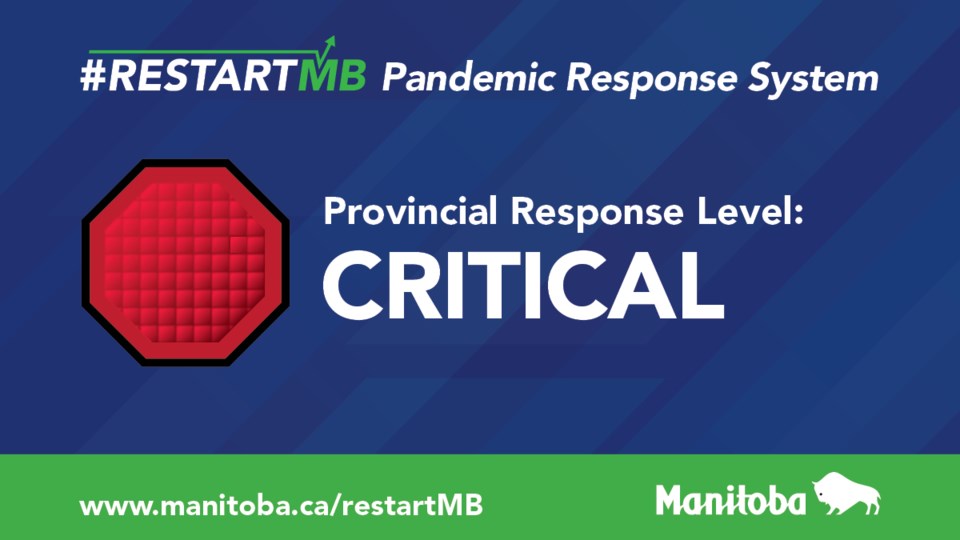Last week’s announcement by Manitoba Premier Brian Pallister and chief public health officer Dr. Brent Roussin that in-person shopping for non-essential items would be banned in all southern Manitoba stores and those in the northern communities of Thompson, Flin Flon and The Pas undoubtedly altered or ruined many people’s Christmas shopping plans. Combined with the sight many of us saw beginning on Saturday, with products deemed non-essential wrapped in plastic n stores that were still open and small businesses scrambling to find ways to offer online, phone based, delivery and curbside pickup options in an effort to salvage some of what should be their busiest time of the year, it also should have hammered home the point that the situation in the province is no longer normal, if that wasn’t clear already.
Many people that we see online urge everyone to obey the rules so that we can get back to normal as soon as possible. But, at this point, it seems unlikely that this province, or the rest of Canada, or most of the rest of the world will be getting back to anything approximating normal in the short term, and probably not for many months to come. The truth is, when Manitoba thought it had done a good job back in the summer, when new case counts were low or, for 13 days, non-existent, it had probably only done a good job in dealing with a very midl first wave, so much so that the government thought rising cases as the summer wore on were just a blip, or the result of people in some areas not following public health orders. As case counts continued to climb through September, and then through October and then to increase more and more through November, to the point that this past Monday saw the largest number of new cases announced in a single day, over 500, it became clear that the province’s early success was just luck.
Although it was the prudent thing to do, given that no one knew how hard the first wave was going to hit, in retrospect having a lockdown in the spring may have ended up being counter-productive, because it convinced people that with a little sacrifice, Manitoba could beat this virus and increased optimism that we would soon be enjoying meals in restaurants and drinks with friends at the bar and days at the beach and cottage again soon. That optimism proved correct, but perhaps the science behind it wasn’t quite in accordance with how much the rules were relaxed. As a result, we got to enjoy the summer but it now looks like Christmas won’t be at all what we’re used to.
Although it seemed like the sky was falling at the time, most Manitobans and probably even public health officials would now be happy to go back to the situation we had in late October, when daily case counts for the province were usually below 200 and the number of deaths announced was usually a few at most. Now it seems like a relief when its less than double-digits, with an average fo seven people dying every day from COVID-19 through the first 23 days of November. At that rate, 11 days is long enough to record more deaths than had occurred from mid-March up until the end of October. By now, it seems, the goal of the pandemic response is not normalcy. It’s merely manageability.
Normal will probably not be back for a long time, given that we only know that about one per cent of the province’s population has had the virus so far. It’s likely there are more who were never tested, possibly never had symptoms, but how many can’t really be quantified. Until there is a vaccine available for the novel coronavirus, probably not until next year 2021 at the earliest, most of us will remain vulnerable to it and, the more cases there are, the more likely those who haven’t had it yet will be to come into contact with someone who has.
There are many reasons why returning to “normal” probably isn’t a high enough bar. Normal means inadequate health care services in the north, rampant inequality, communities that’ve gone without clean drinking water for years and unemployment rates in some northern communities that dwarf the percentage of people with jobs. But creating a new normal that is better than the old one is a goal that will probably have to wait. Right now, the first hurdle is to get to a point where a bad day or bad week doesn’t mean that all the intensive care beds in the province are occupied. There were seven available on Monday, but only because the number has increased by close to twenty in the last few weeks. We’ve already filled up all the ICU beds that there were when the pandemic began and expansion can’t continue forever. unless the supply side of this equation (the number of people contracting COVID-19) begins to show a downward trend, the demand for hospital beds is going to rise. Manitoba’s inability to get a handle on the second wave of the pandemic is already causing the health care system in this province to bend. We’re going to have to start flattening the curve to ensure that it doesn’t, at some point break. As hard as it is to go without Christmas presents or to have to buy them online, or arrange to pick them up curbside, it’s harder to need intensive care and not be able to receive it because capacity has been reached.



